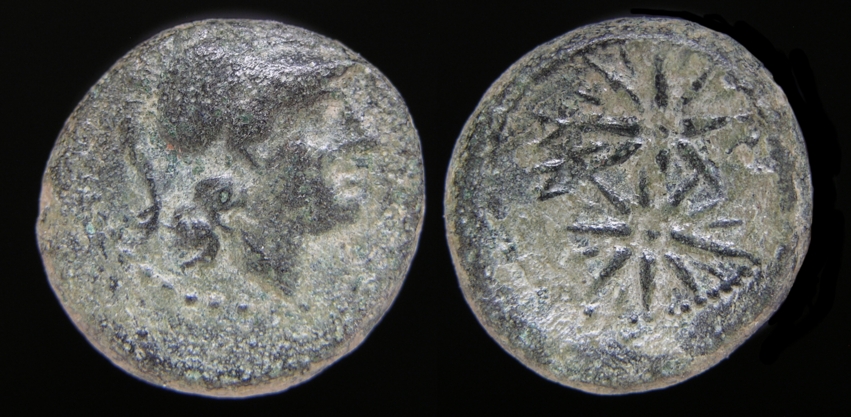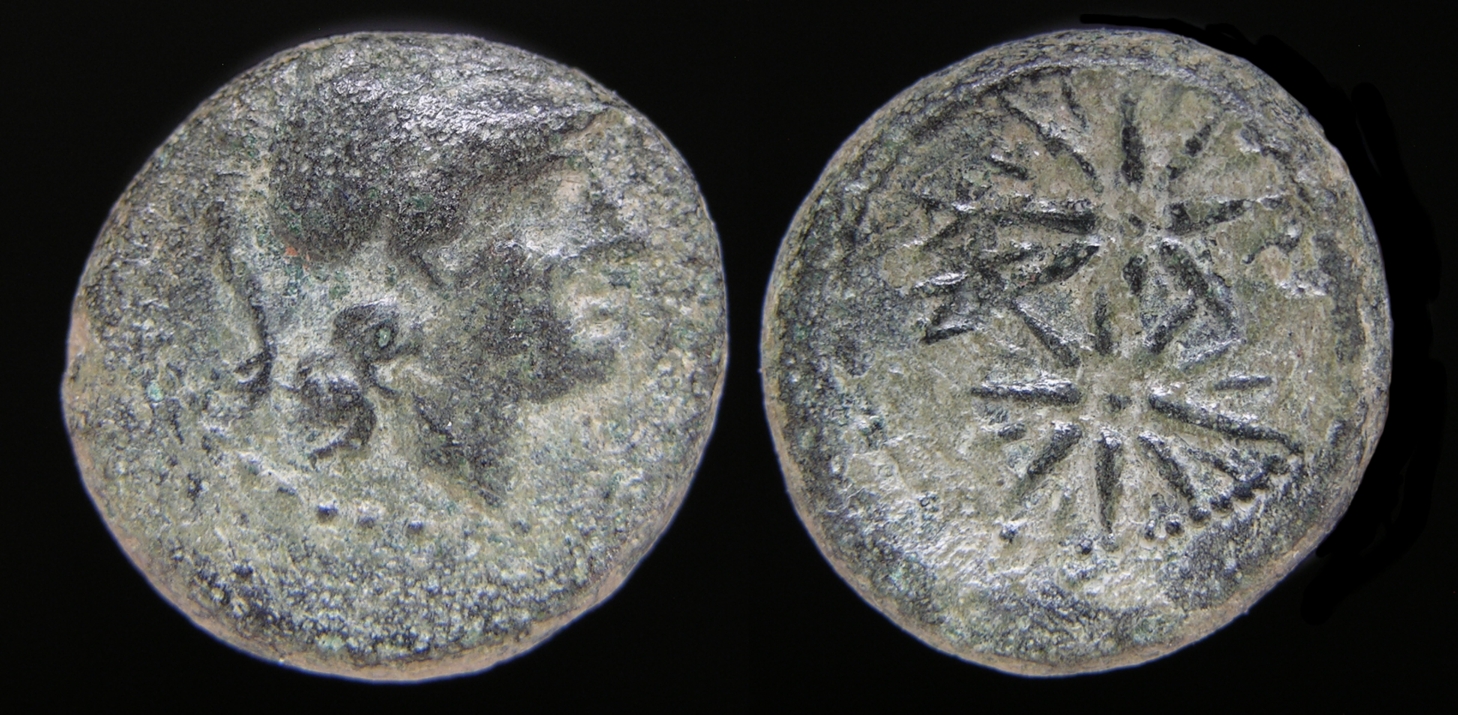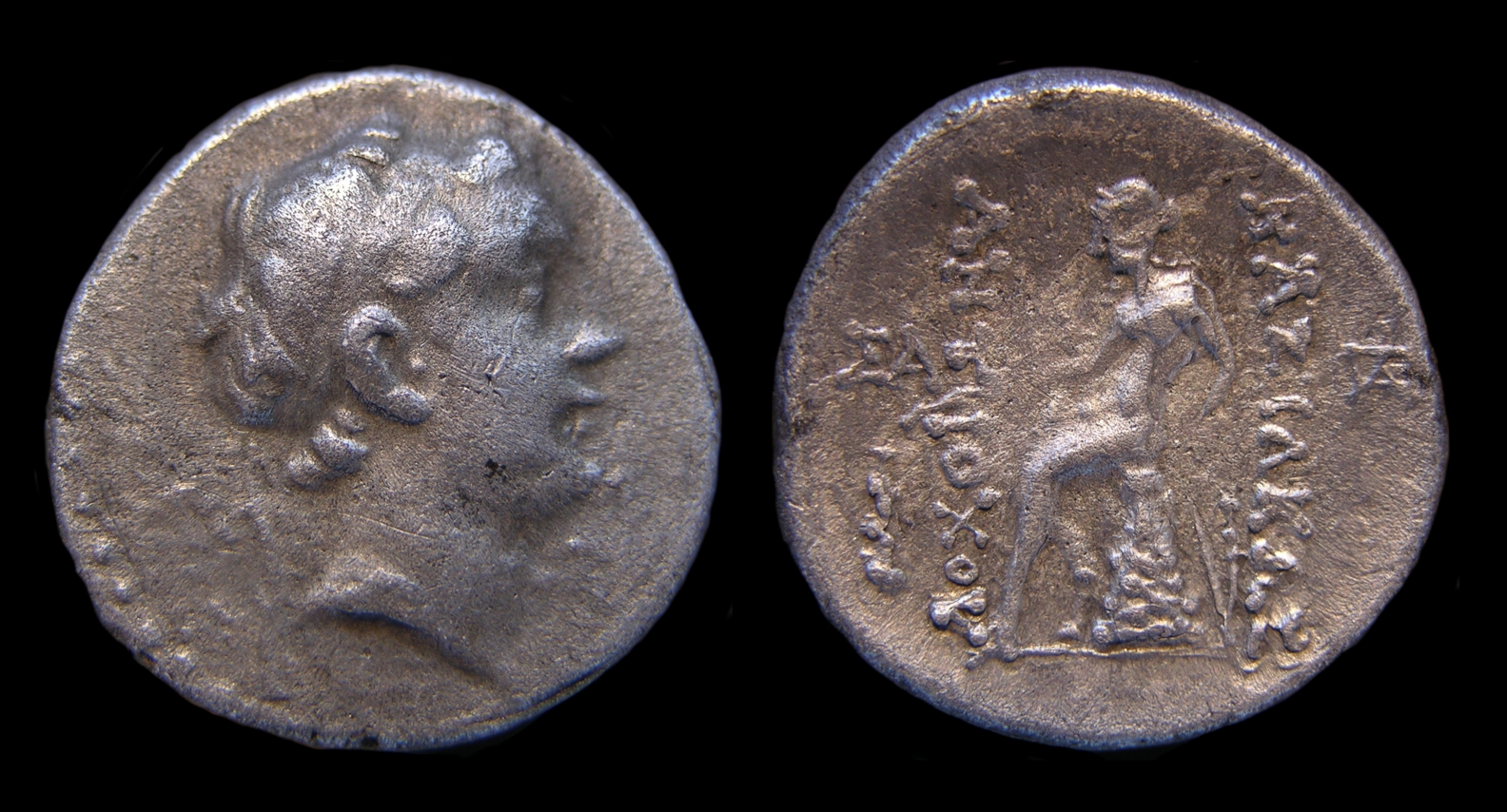 Hover to enlarge
Hover to enlarge

Antiochus I
Mint: Tarsus
Denomination C
280 to 261 BC
Obvs: Head of Athena right in crested Corinthian helmet, dotted border.
Revs: BA above AN below, two stars. Dotted border.
14x15mm, 3.34g
$0.00
Order # G 337
Ref: SC 333; HGC 9, 168(R2)
NFS
 Hover to enlarge
Hover to enlarge
